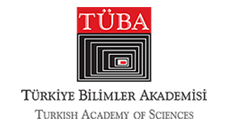A New Perspective on Turkish History with New Maps Drawn for the First Time
 TÜBA has published “The Historical Atlas of Turkic States”, which meticulously maps the political, cultural and geographical changes of the Turkic world and comprehensively addresses the process of Turkic states throughout history.
TÜBA has published “The Historical Atlas of Turkic States”, which meticulously maps the political, cultural and geographical changes of the Turkic world and comprehensively addresses the process of Turkic states throughout history.
The work, which is the result of the great efforts of a team of academics and experts, was prepared with the aim of evaluating the history of Turks from a broad framework and attracts attention with its maps of all Turkic states established throughout history. The maps are completely original, some drawn for the first time. Dedicated to the 100th anniversary of the Republic of Türkiye, the publication fills an important gap in the field and serves as a source for future studies.
The work includes maps drawn for the first time on Turkish history.
TÜBA President Prof. Muzaffer Şeker stated that in an era when global problems necessitate unity and cooperation, the lessons to be learned from the common heritage of Turkic peoples have an even greater meaning, and that the work, which tells the extraordinary journey of Turkic states over time, was achieved thanks to the cooperation of TÜBA and the Turkish Cultural Foundation. TÜBA President Prof. Muzaffer Şeker said, “By combining the original maps in the work with academic narratives, it builds a bridge between the past and the present, bringing generations together with the rich texture of Turkish history. The work not only contributes to a better understanding of our past, but also reinforces the sense of unity among Turkish communities around the world.”
Prof. Azmi Özcan, one of the editors of the work, underlined that the atlas covers Turkish history in terms of time and place and aims to reveal the state tradition of the Turks, especially for students as well as those who are interested. He said that the maps in the work provide the development of historical awareness by placing the abstract past on a concrete ground.
“The maps were prepared using Geographical Information Systems (GIS), and geographical elements were identified using satellite images. Although the historical borders are not precise on the maps, general outlines were determined based on the settlement centers of the period. In order to reflect historical continuity, this atlas also includes some historical entities such as the Mongolian and Tibetan Empires, which were established in some historical periods with Turkish traditions. Our ultimate goal is to ensure that this work plays an important role in the preservation and promotion of Turkish historical and cultural heritage.”

